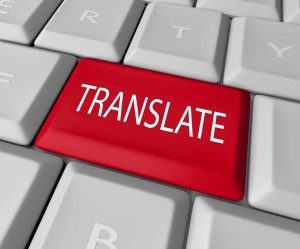
For companies that hope to expand their consumer audience to another country or a new group of non-English speakers, high-quality translation of materials and documents into that community’s language is vital. One of the best ways to ensure that translations of all of your materials are consistent and accurate is to create translation glossaries of all of the terminology that accompanies your products and documents. Not only can a thorough translation glossary improve the speed and cost of acquired translation services, but it also will result in a translation that fits your needs and desires.
So, what exactly is a translation glossary? It is a catalogue of all of the terminology related to your product and company and details about the preferred translations. Some companies prefer that certain product names or slogans not to be translated, such as Apple’s “iPhone,” which typically retains the same name in many other languages despite containing the translatable word “phone.” A translation glossary should also include technical terms, slogans, logos, and other textual elements that do need to be translated. Each entry should include the term in the original language and all allowable translations of the term in all of the company’s target languages. This entry can include details like the most preferable translation and which terms in the target language should be used in different contexts. Additionally, each entry should include a description or definition of the term so that the translator never has any confusion over its meaning. This prevents mistranslations or misuses of the term in context even if a correct translation of the term itself is provided. The entry might include the term’s subject area, part of speech, notes on appropriate usage, and other details.
What kind of terms should you include in your company’s translation glossary? You should make sure to include all company specific words and phrases, vocabulary surrounding products, and frequently used terms in your company’s materials. Some examples of translation glossary entries include product names, slogans, acronyms, abbreviations, and jargon specific to your company. When you are determining which terms to include in your glossary, you may want to consider using a program to calculate the frequency of various terms to determine which appear often enough to merit an entry in the glossary.
You may create a translation glossary that includes information for all of your company’s target languages, or you may wish to generate a separate glossary for each language. Whichever you decide, it is wise to make sure that the glossary is both clear and organized. If the glossary is not easily navigable, the translator will not be able to work as quickly and efficiently, and it may even slow down the process.
Have you ever created or worked with a translation glossary? What do you think is the most important thing to include? Let us know in the comments below!






